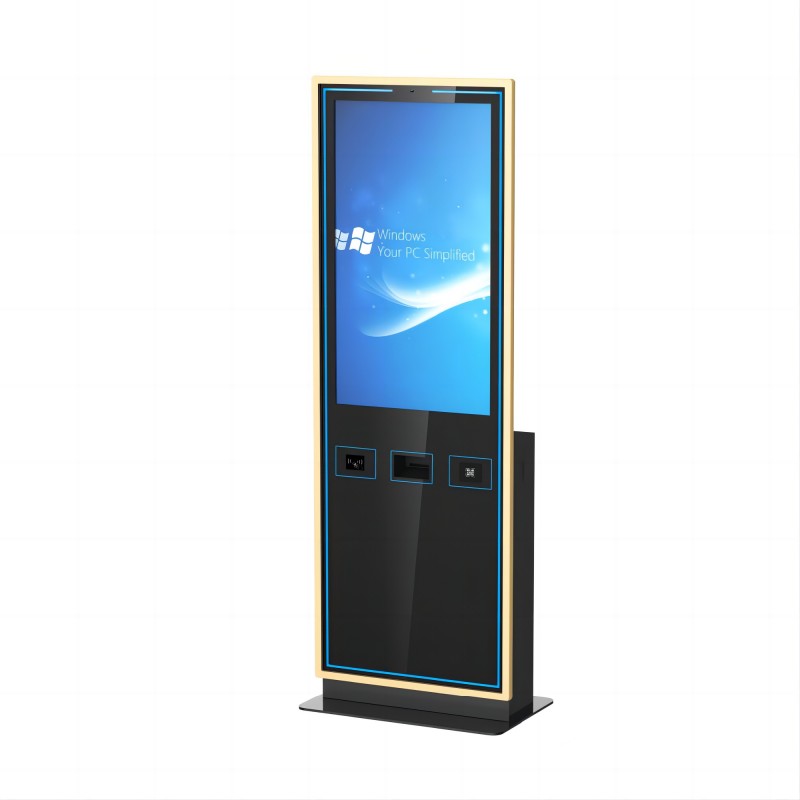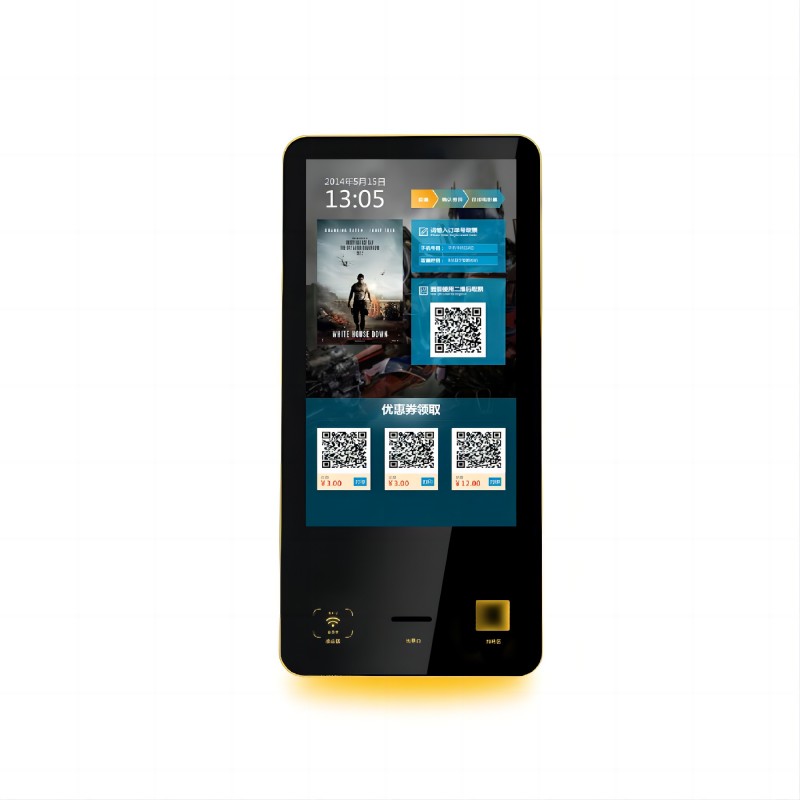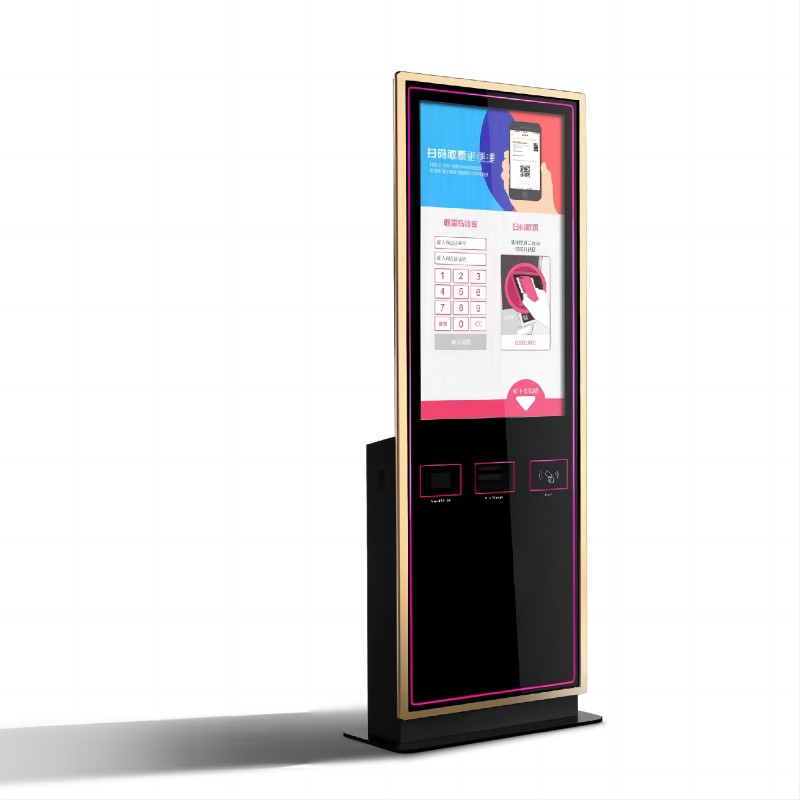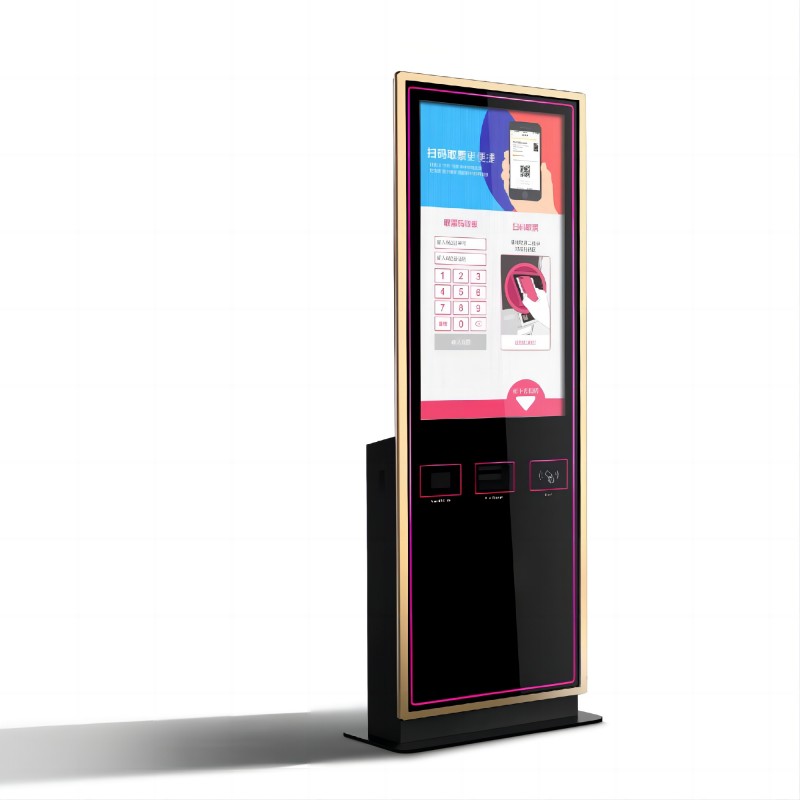
1.Enhance Customer Engagement: Digital signage kiosks provide dynamic and interactive content that captures customer attention, making it easier to engage them with promotions, information, and services.
2.Streamline Information Delivery: They allow us to display real-time information such as menus, schedules, announcements, and advertisements efficiently, ensuring customers always have access to up-to-date content.
3.Improve Operational Efficiency: By automating the delivery of information and services, digital signage kiosks reduce the need for manual updates and staff involvement, leading to more efficient operations.
4.Customization and Flexibility: We can easily customize the content displayed on digital signage kiosks to suit different occasions, promotions, and customer preferences, making our messaging more relevant and timely.
5.Data Collection and Analysis: Digital signage kiosks can gather valuable data on customer interactions and preferences, allowing us to analyze trends and optimize our marketing strategies and service offerings.
6.Cost-Effective Marketing: These kiosks provide a cost-effective platform for advertising and promoting our products and services, reducing the need for traditional print marketing materials and reaching a wider audience with digital content.
By integrating digital signage kiosks into our operations, we enhance the customer experience, improve efficiency, and gain valuable insights, all while maintaining flexibility and reducing costs.
1. Browse Information: Users view video, image, or text information.
2. Scheduled Playback: Content is managed and played in a predefined sequence by the backend system.
Touchscreen Display: A high-resolution touchscreen that allows users to interact with the kiosk. It should be durable and responsive to touch.
Processor and Memory: Robust CPU and adequate RAM to ensure smooth operation and quick response times.
Enclosure: A sturdy and often weather-resistant casing that protects internal components from damage, suitable for various environments.
Connectivity Options: Includes Wi-Fi, Ethernet, Bluetooth, and sometimes cellular connectivity to ensure the kiosk can stay connected to the network.
Payment Terminal: Integrated card readers and contactless payment systems for secure transactions.
Printers: For printing receipts, tickets, or other necessary documents for customers.
Cameras and Sensors: Optional components for security, facial recognition, or interaction tracking.
Power Supply and Battery Backup: Reliable power supply with battery backup options to ensure the kiosk remains operational during power outages.

Content Management System (CMS): A robust CMS that allows easy creation, scheduling, and management of the content displayed on the kiosk.
Interactive Software: Enables touch-based interactions, such as navigation through menus, product selections, or information requests.
Payment Processing Software: Secure software to handle various payment methods, including credit/debit cards and mobile payments.
Analytics and Reporting: Tools to track usage statistics, customer interactions, and other valuable data for business insights.
Remote Management: Allows administrators to update content, troubleshoot, and manage multiple kiosks from a remote location.
Multi-Language Support: Ensures the kiosk can cater to a diverse audience by supporting multiple languages.
Security Features: Includes encryption, secure login, and other measures to protect sensitive data and transactions.
Integration Capabilities: Software that can integrate with existing business systems such as CRM, inventory management, and point-of-sale (POS) systems for seamless operation.

1. Public Services: Display service information, bill payment guidance, and announcements.
2. Transportation: Provide timetables, navigation information, and announcements at stations and airports.
3. Healthcare: Offer department guidance, health information, and waiting notifications in hospitals and clinics.
4. Hospitality: Introduce hotel facilities, promote events, and collect customer feedback.
5. Retail: Display advertisements, product information, and promotional activities.
6. Entertainment: Provide event introductions and ticket information for cinemas, museums, and amusement parks.

1.Enhanced Customer Experience: Digital kiosks provide an intuitive and user-friendly interface, making it easier for customers to navigate and complete transactions quickly and efficiently.
2.Increased Efficiency: By automating tasks such as ordering, ticketing, and check-ins, digital kiosks reduce wait times and free up staff to focus on other important duties, leading to a more efficient operation.
3.Cost Savings: Over time, digital kiosks can reduce labor costs by handling routine tasks that would otherwise require staff intervention. This leads to significant cost savings for businesses.
4.Data Collection and Analytics: Kiosks can collect valuable data on customer behavior and preferences. This information can be analyzed to improve services, tailor marketing efforts, and make informed business decisions.
5.Consistent Service: Digital kiosks provide consistent and accurate service every time, minimizing human errors and ensuring that customers receive the same high-quality experience with every interaction.
6.Customization and Flexibility: Businesses can easily update kiosk content, menus, and promotional materials remotely. This flexibility allows for quick adaptations to changing needs and trends, keeping the business competitive and responsive.

Define Objectives: Identify primary goals such as improving customer engagement or providing information.
Choose Hardware: Select components like a high-resolution touchscreen, robust processor, secure enclosure, payment terminals, printers, and connectivity options.
Design User Interface: Create an intuitive, brand-aligned interface with custom colors, logos, fonts, and layout.
Develop Software: Implement a content management system (CMS) for easy updates, interactive features, multi-language support, and secure payment processing.
Integrate Systems: Ensure seamless integration with existing business systems like CRM, inventory management, and POS for cohesive operations.
Test Functionality: Thoroughly test all components and software for user experience, connectivity, and security.
Implement Analytics: Use tools to track user interactions and gather data for insights and service improvements.
Plan Installation: Choose optimal locations for visibility and usage, ensuring proper setup.
Train Staff: Train staff on operation, maintenance, troubleshooting, and content updates.
Monitor and Maintain: Regularly monitor performance and schedule maintenance and updates.

1.User Interface Design: Tailor the UI to match your brand’s aesthetic with custom colors, logos, fonts, and layout. Create a cohesive and branded customer experience that reflects your business identity.
2.Content Management: Customize menus, product lists, and promotional content in real-time. Easily update content to reflect new offerings, seasonal changes, or special promotions, ensuring relevance and engagement.
3.Payment Integration: Incorporate various payment methods including credit/debit cards, mobile payments (e.g., Apple Pay, Google Wallet), and loyalty programs. This provides convenience and flexibility for customers.
4.Language and Accessibility: Support multiple languages and accessibility features such as text-to-speech, large text options, and high-contrast modes. Cater to a diverse customer base, ensuring everyone can use the kiosk easily.
5.Hardware Configuration: Customize physical components like screen size, type of touchscreen (capacitive or resistive), printers, barcode scanners, and cameras. Select hardware that meets specific business needs and usage scenarios.
6.Software Integrations: Seamlessly integrate with existing business systems like CRM, inventory management, and point-of-sale (POS) systems. This ensures smooth data flow and enhances operational efficiency, making the kiosk a central part of your business operations.

1. Identify Your Needs: Determine the objectives and required features for the kiosk.
2. Set a Budget: Establish a budget for all related costs including hardware, software, and maintenance.
3. Research Vendors: Look for reputable kiosk manufacturers and suppliers.
4. Request Quotes and Proposals: Obtain detailed quotes from multiple vendors to compare pricing and features.
5. Evaluate Hardware Options: Select hardware components that meet your specific requirements.
6. Assess Software Solutions: Choose a CMS and software that support needed functionalities and integrate with your systems.
7. Customization and Design: Work with the vendor to customize the kiosk’s interface and hardware.
8. Pilot Testing: Conduct a pilot test to evaluate performance and make adjustments based on feedback.
9. Finalize Purchase and Contracts: Review and finalize the purchase agreement, ensuring all specifications are documented.
10. Installation and Setup: Plan and execute the installation in strategic locations.
11. Staff Training: Train staff on operating, maintaining, and updating the kiosks.
12. Ongoing Monitoring and Maintenance: Regularly monitor performance and schedule maintenance and updates.
- Integration: Ensure compatibility with existing systems and networks.
- Content Updates: Support remote real-time content updates to ensure information timeliness and accuracy.
- Versatility: Support multiple functions and applications to meet the needs of different scenarios.
Summary: Kiosk digital signage is a powerful tool for enhancing communication, providing dynamic and interactive content, and improving user engagement across multiple sectors. Their versatility, ease of use, and ability to display real-time information make them an essential component for modern public spaces, retail environments, healthcare facilities, transportation hubs, and more.
By using kiosk digital signage, businesses and public service institutions can offer richer content, more convenient services, and superior user experiences, while improving operational efficiency and user satisfaction.
What did our happy clients say?
Intuitive User Interface: The user interface of this digital kiosk display is exceptionally intuitive, making customer interactions seamless. I'm highly satisfied with its user-friendly design.
Robust Hardware Performance: The hardware of this digital kiosk display is impressively robust and reliable, handling high-volume usage without any issues. I'm very pleased with its durability.
Smooth Software Operation: I'm impressed with the smooth performance of the software on this digital kiosk display. It runs flawlessly, providing dependable support for our operations.
Responsive Customer Support: I greatly appreciate the manufacturer's quick response and professional support. They ensure timely resolutions to any issues, enhancing our satisfaction with this digital kiosk display purchase.